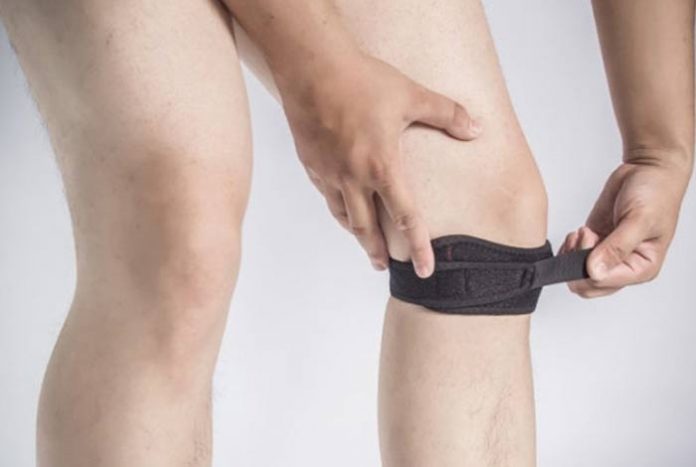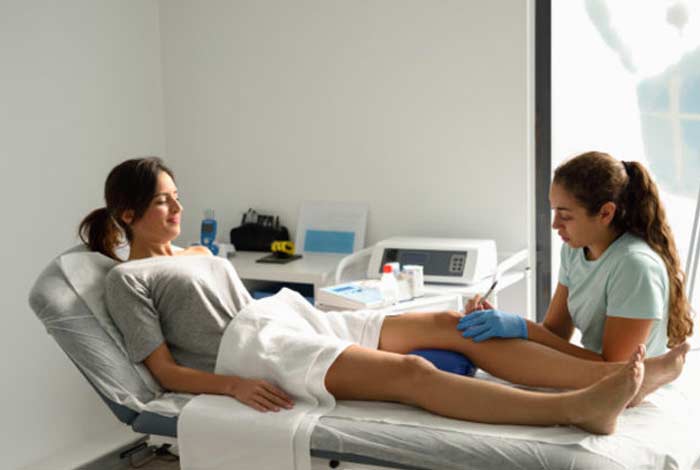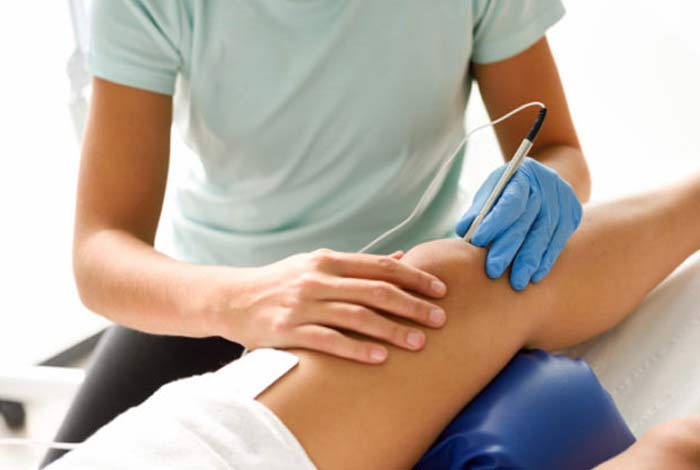
Overview and Facts
Restless leg syndrome (RLS), also called Willis-Ekbom disease, is a neurological sensory disorder associated with the nervous system of a person. It causes an uncomfortable and unpleasant sensation in legs (feet, thighs or calves) and leads to an irresistible urge to move legs. The sensations can range from mild to severe and may differ from person to person.
The sensation generally gets triggered when a person is at rest or sitting for a longer duration. It can happen to a person at any time during the day, evening or at night. The sensation can occur in any posture; whether a person is sitting or lying in bed. Moreover, this neurological sensory disorder can happen to anyone, regardless of his/her age.
The condition is also associated with sleep disorders as it can cause uncontrollable quivering of legs or arms during sleep, known as periodic limb movement in sleep (PLMS). However, it is not necessary that every person suffering from PLMS would have RLS. Also, it has been classified as a movement disorder as it causes uncontrollable movement of legs.
It can disrupt the sleep of a person and can lead to daytime drowsiness, exhaustion and fatigue, and can deeply affect the daily routine of a person, affecting their lifestyle and relationships as well. However, the condition can still be treated with the help of various lifestyle changes and if the symptoms are severe, medication might be required to treat the symptoms. Also, if not treated, the condition might even lead to anxiety or depression.
According to statistics, there are chances that about 7-10% of the US population is suffering from restless leg syndrome. The condition is more common in middle-aged and old people. Also, RLS is more common in women as compared to men. Also, about 80% of people suffering from RLS have PLMS too.[1]
Types and Symptoms of Restless Leg Syndrome
Types of Restless Leg Syndrome:
There are two types of restless leg syndrome, classified on the basis of what causes the condition. These include:
- Primary RLS: When no specific cause of the condition is known, it is referred to as primary or ‘idiopathic’ restless leg syndrome.
- Secondary RLS: When the restless leg syndrome is caused by some underlying health condition, such as iron deficiency, end-stage renal disease or neuropathy, it is referred to as secondary restless leg syndrome.
Symptoms of Restless Leg Syndrome:
The most common symptom of restless leg syndrome is the uncontrollable desire to move legs. A person suffering from RLS has weird sensations in his legs. These sensations can be described as uncomfortable creeping, crawling, aching, pulling, throbbing or itching in the legs. When a person feels these sensations, he tries to get relief by moving his legs.
If a person moves his legs at a faster pace or keeps moving their legs while sitting, it indicates that they are suffering from restless leg syndrome. Moreover, continuous flipping and tossing of legs in bed can also be a sign of restless leg syndrome.
Also, the common symptom of RLS – weird sensations in legs generally gets triggered when a person is at rest. For example, a person can feel creepy sensation in their legs while they are sitting for a longer duration, such as traveling in a car or plane, which can make your travel an unpleasant experience. Also, the sensations could occur while a person is lying on bed and even during sleep. When quivering of their legs during sleep is observed, the condition is known as periodic limb movement in sleep (PLMS), which is also a prominent symptom of RLS.
One of the major aspects of sensations associated with RLA is that these occur when a person is sleeping and generally disappear during morning for a distinct period of time. The sensations felt at night spoils the sleep, while making people feel sleepy during the daytime when they are not supposed to sleep. This causes disturbance in the daily routine of a person and can cause lifestyle disturbances, as well as daytime fatigue and tiredness.
Moreover, the symptoms get worse over time. Initially, the symptoms are mild when the problem starts, but with the progression of the condition, symptoms may get worse. Also, in some cases, the symptoms can be observed in the arms.
According to latest studies, restless leg syndrome is also linked with serious health conditions, such as coronary artery disease and stroke. By far, these are one of the most harmful complications associated with restless leg syndrome.
Risk Factors of Restless Leg Syndrome
There are some factors that can increase the risk of restless leg syndrome in people. These are discussed below:
Gender: Women are at a higher risk of having restless leg syndrome as compared to men.
Age: Middle-aged or old people are at a greater risk of developing RLS.
Genetic: A person may inherit the condition from the previous generation due to faulty genes. The chances of having restless leg syndrome increases if someone in the close relationship has suffered from the condition.
Other Medical Conditions: Some health conditions may increase the risk of having RLS. Though there is no serious medical condition linked with the development of restless leg syndrome, a few might give rise to the problem. These are:
- Iron Deficiency: This can possibly cause restless leg syndrome. However, iron deficiency can also lead to anemia, but it isn’t necessary that a person with anemia would always suffer from restless leg syndrome or vise-versa. Repetitive donation of blood, bleeding from bowel or stomach and heavy menstruation in women can give rise to iron deficiency, which can later lead to RLS.
- Kidney Failure: Renal failure can also give rise to iron deficiency in the body. A kidney failure lowers the amount of iron in the blood. The reduced level of iron in the body can lead to anemia or restless leg syndrome.
- Peripheral Neuropathy: It refers to the damage caused to the nerves in the feet or hands. The damage is generally caused by chronic conditions, such as alcoholism or diabetes.

Do I have Restless Leg Syndrome?
If you think you or someone in your family is suffering from RLS, you need to carefully observe the symptoms of the condition. If symptoms like movement of legs at a faster pace, or movement of legs while sitting or lying are observed there are chances that a person is suffering from restless leg syndrome. Also, if you observe that your partner moves their legs while sleeping, it may be an indication of RLS.
However, sometimes people mistake periodic limbs movement in sleep (PLMS), i.e., quivering of legs or arms during sleep with restless leg syndrome. This is because both involve the movement of legs while sleeping. But, it is not necessary that every case of PLMS is restless leg syndrome, it is a separate condition and can happen to anyone. However, RLS can possibly lead to PLMS.
Thus, a proper diagnosis of the condition is required in order to determine the effective treatment method.

Causes and Prevention of Restless Leg Syndrome
Causes of Restless Leg Syndrome:
In case of primary RLS, there is no specific known causative factor. However, genetics and heredity are linked with the condition and considered as the possible cause of restless leg syndrome. According to researchers, RLS generally runs in families and can be inherited by a person from his previous generations.
On the other hand, secondary RLS can be caused by various factors or underlying health conditions. Some of the factors that can cause or worsen restless leg syndrome are as follows:
- Hemodialysis, used to treat end-stage renal disease
- Iron deficiency that can lead to anemia or restless leg syndrome
- Chronic health conditions, such as diabetes, rheumatoid arthritis, Parkinson’s disease or hypothyroidism
- Pregnancy can also cause RLS in women, especially during the 3rd trimester. However, the symptoms of the condition usually disappear in several weeks after the delivery
- Overconsumption of caffeine, alcohol or nicotine.
- Usage of drugs antiemetics, antidepressants or antipsychotics.
- Sleep disorders like sleep apnea can cause sleep deprivation that can lead to restless leg syndrome.
Moreover, RLS is also known to be related to problems with a part of brain, known as basal ganglia. This part is responsible for controlling the movement and muscle activity in the body. It utilizes a neurotransmitter chemical, called dopamine to perform its functions.
Dopamine establishes a network between the brain and the nervous system, and helps regulate the body movements. However, if basal ganglia dysfunctions, it affects the production of dopamine in the body; thereby, leading to uncontrollable movement of limbs, which may result in restless leg syndrome or Parkinson’s disease.
Prevention of Restless Leg Syndrome:
Since there is no defined cause of restless leg syndrome, there is no specific way to prevention it. Nevertheless, there are several lifestyle changes that can help prevent the symptoms of restless leg syndrome. These include:
- A healthy diet can help get better sleep. Also, limiting the consumption of caffeine and alcohol and consuming a nutritious diet can help improve the symptoms of restless leg syndrome.
- Reducing stress helps relieve the symptoms of restless leg syndrome.
- Smoking can worsen the symptoms of RLS. Giving up on the smoking or limiting the same can be helpful in patients of this neurological sensory disorder.
- Avoiding drugs that can trigger the symptoms of RLS could be helpful. Medications like antidepressants and antipsychotic drugs. Limiting the usage of these drugs can possibly help in treating the symptoms of condition. Also, consulting a doctor is advised, so that they can prescribe different medicines for treating other health conditions.
- Exercising regularly can also help reduce the symptoms of restless leg syndrome. An everyday exercise routine that includes 30-40 minutes of workout can be helpful in offering relief from the symptoms of RLS.
According to a study by NCBI, vitamin D supplements can be helpful in reducing the severe symptoms of restless leg syndrome. However, it is a general recommendation to consult a doctor before using any kind of supplement.

Diagnosis and Tests for Restless Leg Syndrome
The diagnosis of restless leg syndrome includes physical examination of the symptoms. A doctor examines the medical and family history of the patient to check whether the condition is genetic or is caused by some underlying health condition. The doctor may also ask the patient about medications that he is using as certain drugs are known to trigger the symptoms of RLS.
The condition is generally diagnosed on the basis of guidelines provided by the International Restless Legs Syndrome Study Group that include:
- Uncontrollable urge to move legs that is triggered because of various weird sensations in calves, thighs or feet. The sensations can be described as creeping, crawling, tingling, itching, pulling or cramping.
- Triggering of symptoms while the body is at rest, i.e., sitting or lying. Also, the symptoms get worse during night when a person tries to sleep.
- Moving the legs to provide temporary relief from those weird sensations.
If a patient fits in the guidelines mentioned above, it indicates that he/she is suffering from restless leg syndrome.
Nevertheless, the doctor might also perform a blood test in order to diagnose other health conditions that could possibly be causing RLS. A blood sample of patient is examined for the level of iron in the body to check whether the deficiency of iron is the root cause of restless leg syndrome.
Also, the blood test examines the levels of thyroid hormone in the body and several other characteristics of blood that can be helpful in checking for other health conditions as an underlying cause of RLS.
Besides, a needle electromyography test can be performed by the doctor in order to check whether neuropathy, i.e., damage to nerves is the cause of RLS.
If the condition is disturbing the sleep pattern of a person, the doctor might recommend seeing a sleep specialist. A sleep specialist can perform various tests that can help diagnose restless leg syndrome. To diagnose the condition, a sleep specialist may perform the below-given tests:
- Immobilization Test: The patient is asked to lie down on a bed without making any movement. Later, the specialist examines the involuntary movement of legs, which is a sign of RLS.
- Polysomnography: This test involves the study of the breathing rate, heartbeat and the brainwaves of a person while they are asleep. The doctor analyzes the results of the test to determine whether a person is suffering from PLMS, which again, can be possible symptom of RLS.
Proper diagnosis helps determine the appropriate treatment plan for the patient.

Treatment and Care for Restless Leg Syndrome
In case of primary restless leg syndrome, there is no specific treatment available that can help cure the condition. However, if the symptoms of the condition are mild, it can be treated with the help of some lifestyle changes. Following are the lifestyle changes that can help treat the symptoms of mild restless leg syndrome:
- Eating a healthy, nutrition-rich diet and avoiding the consumption of stimulants like caffeine, alcohol, or tobacco.
- Regular exercise involving daily workout can help maintain general health and prevent symptoms of RLS.
- Maintaining sleep hygiene, i.e., providing appropriate amount of sleep to the body, sleeping and waking up at regular time intervals, and avoiding sleep during the daytime can be helpful in providing appropriate amount of rest to the body.
- Quitting smoking
- Avoiding the consumption of medications that triggers the symptoms of the condition.
These lifestyle changes can be effective in reducing the weird sensations caused by restless leg syndrome. However, when the symptoms of RLS gets triggered, there are several ways that can help in offering relief. These include:
- Stretching the legs, or walking
- Massaging legs with hands or with hot or cold compresses
- Hot water bath
- Distracting the mind by indulging in some other activities, such as reading
These methods can help provide necessary relief during the moments when a person with restless leg syndrome feels weird sensations in their legs. Besides, the U.S. FDA has also approved certain medical devices like foot wraps that can put pressure on the foot and reduce the sensations in legs and foot pads that can produce vibrations, which can help in providing relief from the condition.
However, In case of secondary restless leg syndrome, it can be treated by treating the health condition that is causing the problem. Various medications that can help treat secondary RLS include:
- Iron Supplements: These can be used for the treatment of restless leg syndrome if it is caused as a result of iron deficiency in the body. These supplements are available over the counter (OTC) and can be used to fulfill the body’s requirement of iron. However, these supplements can lead to stomach upset, which is a common side effect as the digestion of iron is a tedious task for the body.
- Dopaminergic Agents: These drugs are effective in increasing the effects of dopamine neurotransmitter in the body. Dopamine helps regulate movement by establishing a network between the brain and the nervous system. Dopaminergic agents are approved by the FDA and are widely used for the treatment of Parkinson’s disease.
Ropinirole, rotigotine and pramipexole are some dopaminergic agents that can be helpful in treating the symptoms of mild to severe RLS. Another dopamine drug, called Levodopa and carbidopa are widely used for the treatment of RLS. However, these drugs can cause some side effects like nausea and dizziness.
Also, long-term use of these drugs can worsen the symptoms of the condition. These may cause impulse control disorder (ICD), which leads to harmful addictions, such as gambling, alcohol, drug, sex (hypersexuality). Thus, using these drugs only for a limited period of time is advised and should always be consumed only after medical consultation.
- Anti-Seizure Drugs: Medications like enacarbil and gabapentin are approved by the FDA for the treatment of RLS. These are as effective as dopaminergic agents and aren’t associated with worsening the symptoms when used for a longer duration.
- Benzodiazepines: These are sleep-aiding drugs and can be helpful in providing a restful sleep. These medications are prescribed for short-term use, because when used for a longer period, these can cause side effects, such as daytime sleepiness. Clonazepam, temazepam, and loprazolam are some of the benzodiazepines that are prescribed for treating the disruption of sleep caused by restless leg syndrome.
- Opioid Drugs: Thee are prescribed to patients with severe symptoms of RLS. Opioid medications, such as methadone, hydrocodone, oxycodone and codeine are prescribed when other drugs are ineffective in managing the symptoms of the condition.
Except a few lifestyle changes and medications, there is no complete cure of RLS. The treatment can help in providing relief from the symptoms. The symptoms gradually worsen over time, but keeping up with the medications and habitual changes can improve the condition of RLS patient.
OTC Medications and Self-Management Methods for Restless Leg Syndrome
Iron supplements can help in the treatment of restless leg syndrome when caused by deficiency of iron in body. These supplements are available in market for over-the-counter purchase and can help in fulfilling the body’s requirement of iron.
However, if the symptoms of the condition are severe, it is advised not to use any OTC medication. In such as case, it is advised to consult a doctor, so that they can analyze the symptoms and prescribe appropriate medications for the treatment of the condition.
Besides medications, it is also necessary to follow a healthy lifestyle and give up on bad habits like smoking and consumption of alcohol. Also, working out regularly and maintaining a healthy sleep cycle can help in coping up with the symptoms of restless leg syndrome.

Health Tip by Expert
Restless leg syndrome might look normal in the initial stages because of mild symptoms. However, the symptoms get severe with time and can disrupt the daily life of a person. Thus, it is required to take immediate action and follow necessary lifestyle changes, such as regular exercise, giving up on smoking and limiting the consumption of alcohol, so as to better manage the symptoms.
Also, if the symptoms have turned severe, it is advised to visit a doctor, so that they can prescribe appropriate medications to control the symptoms of RLS.





